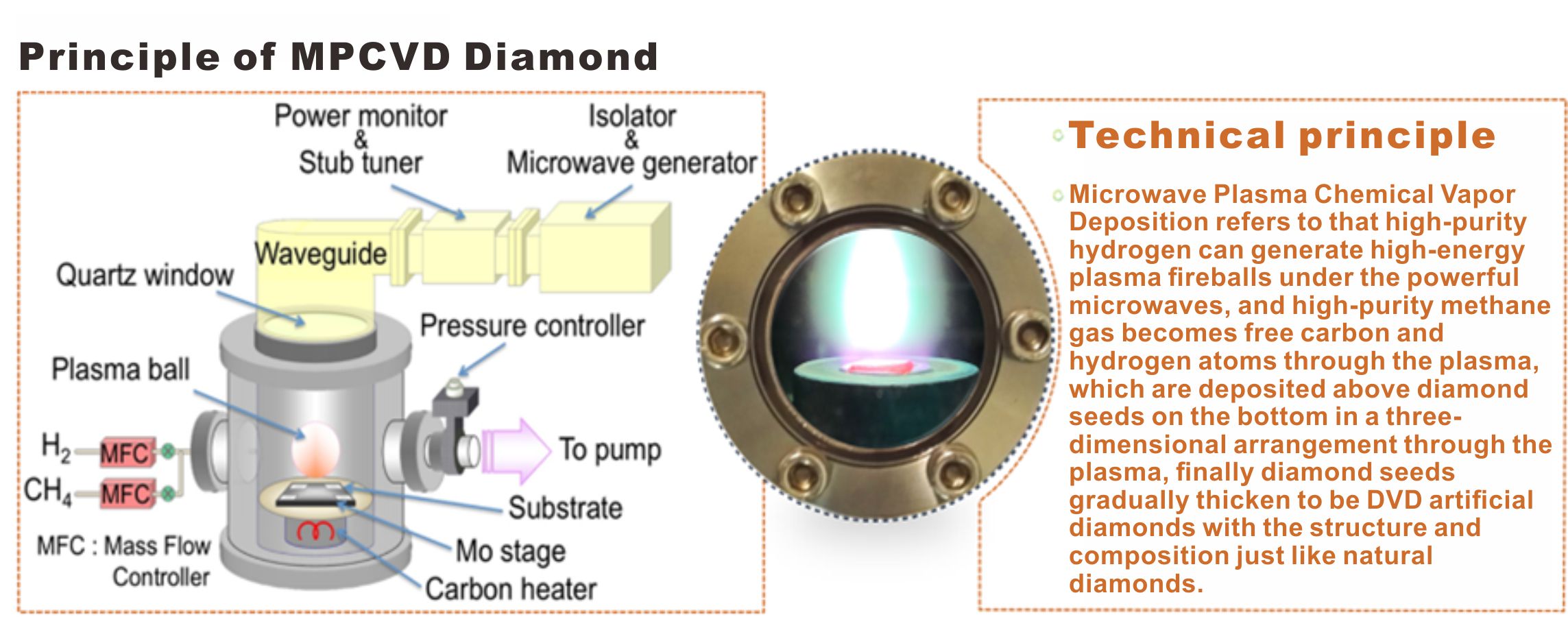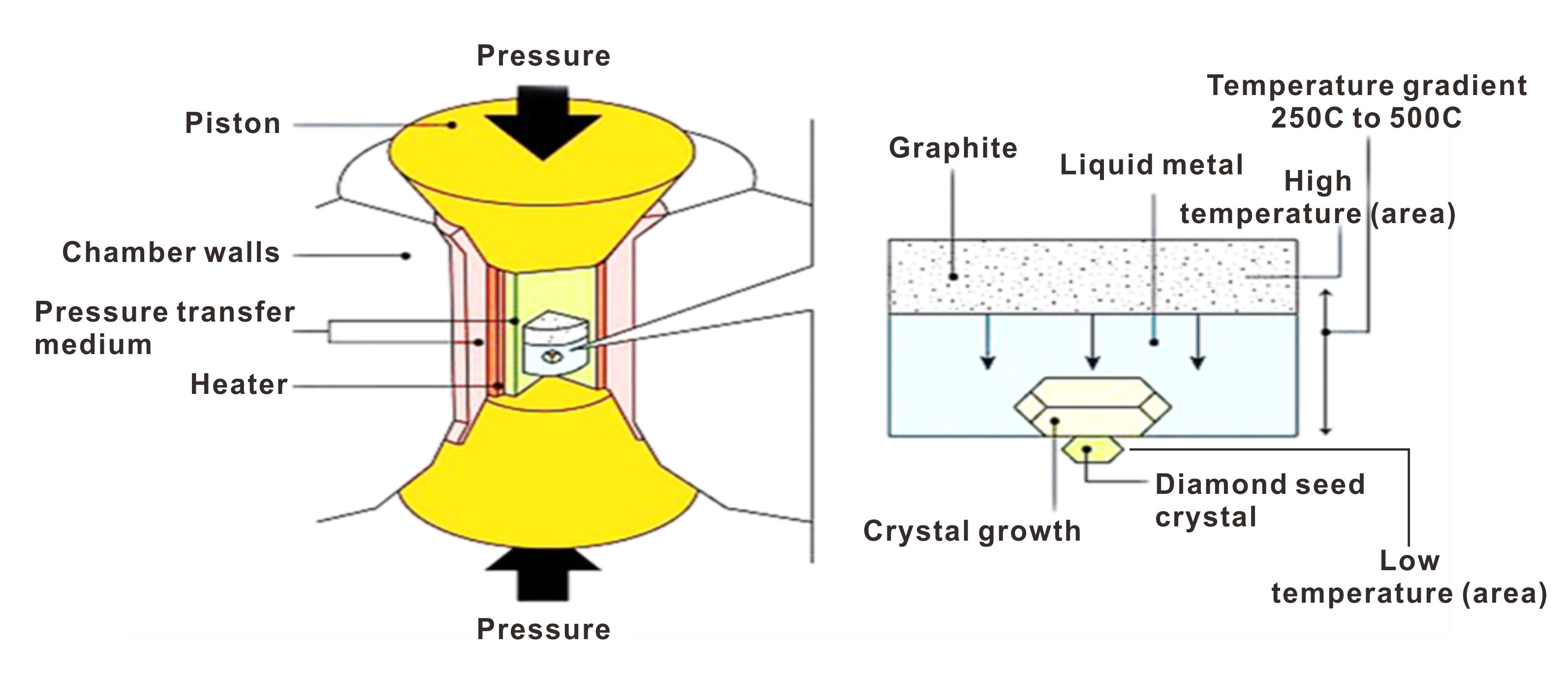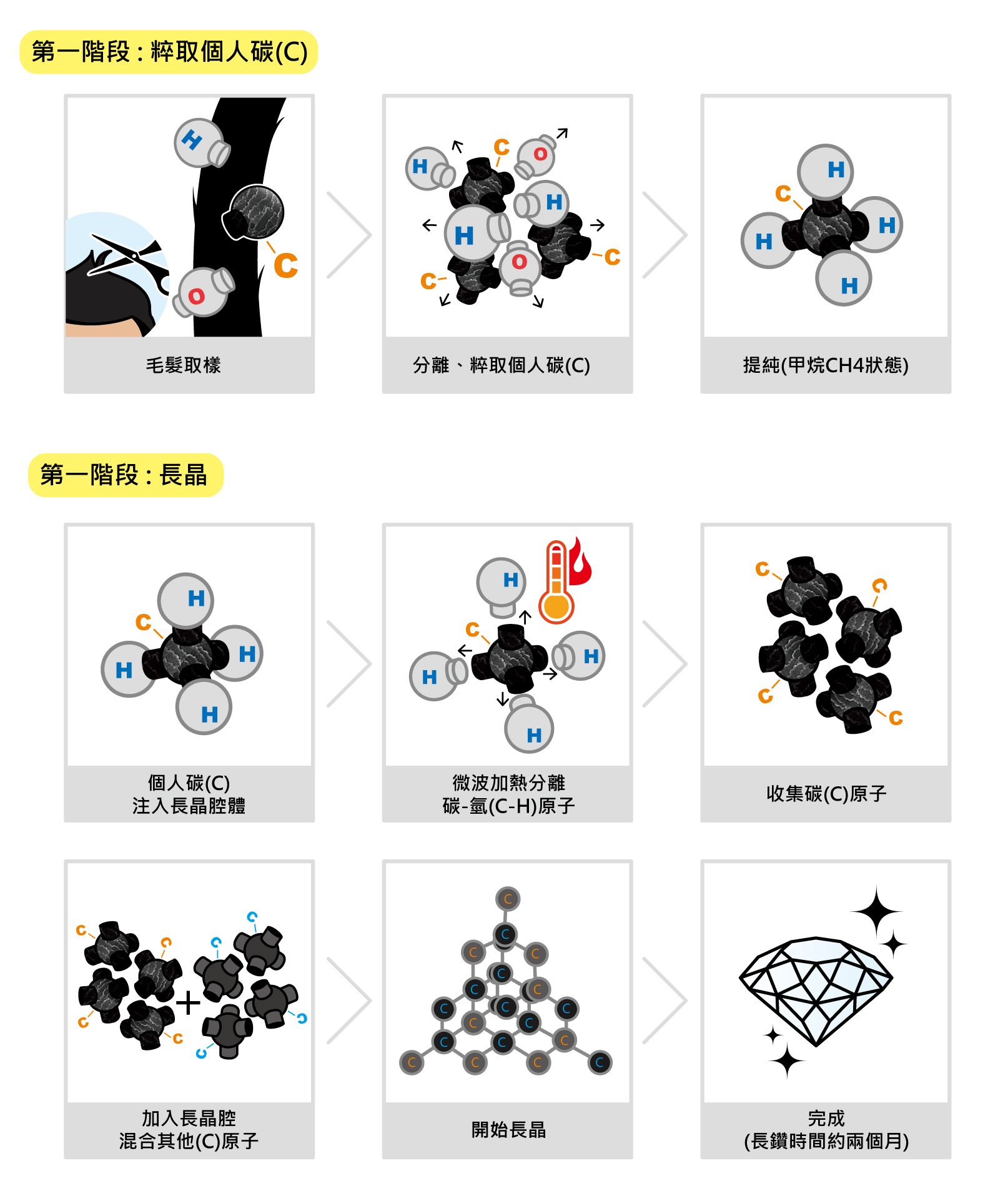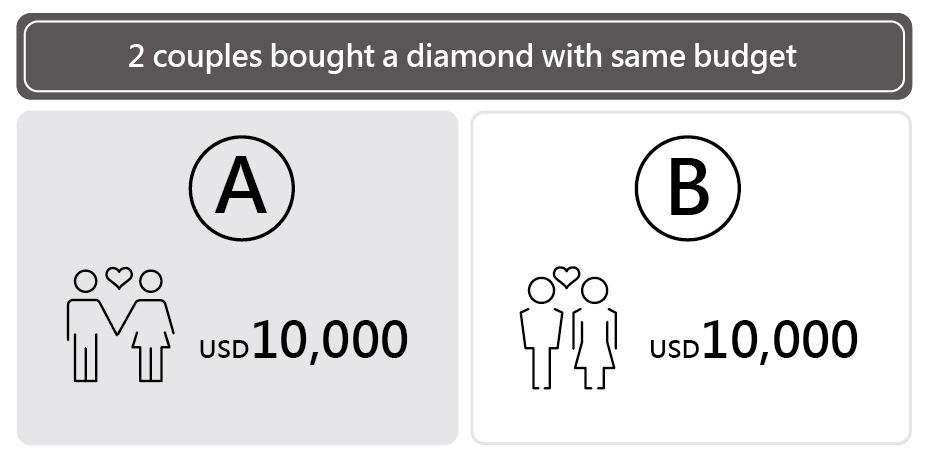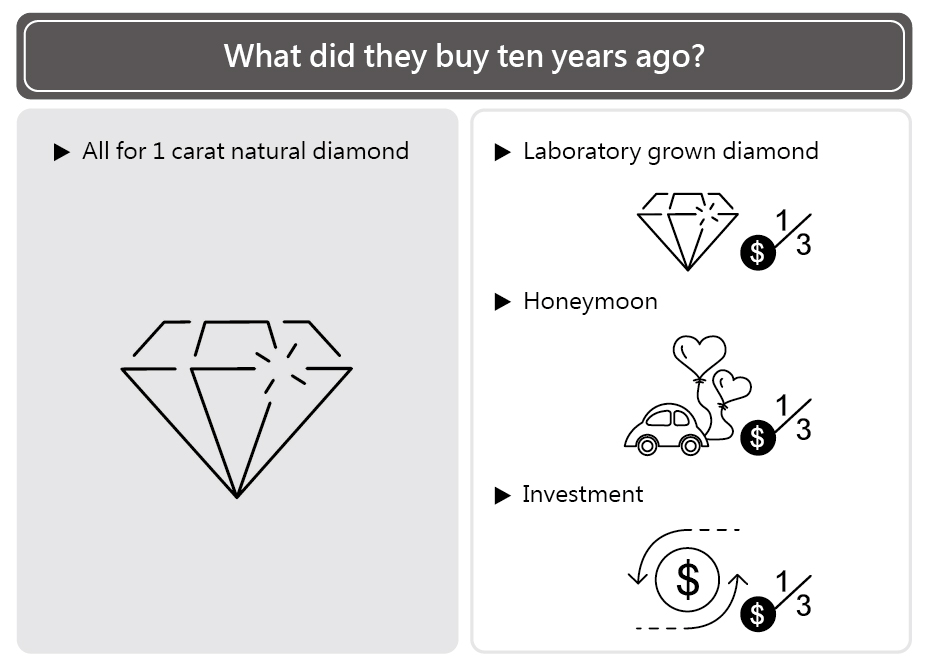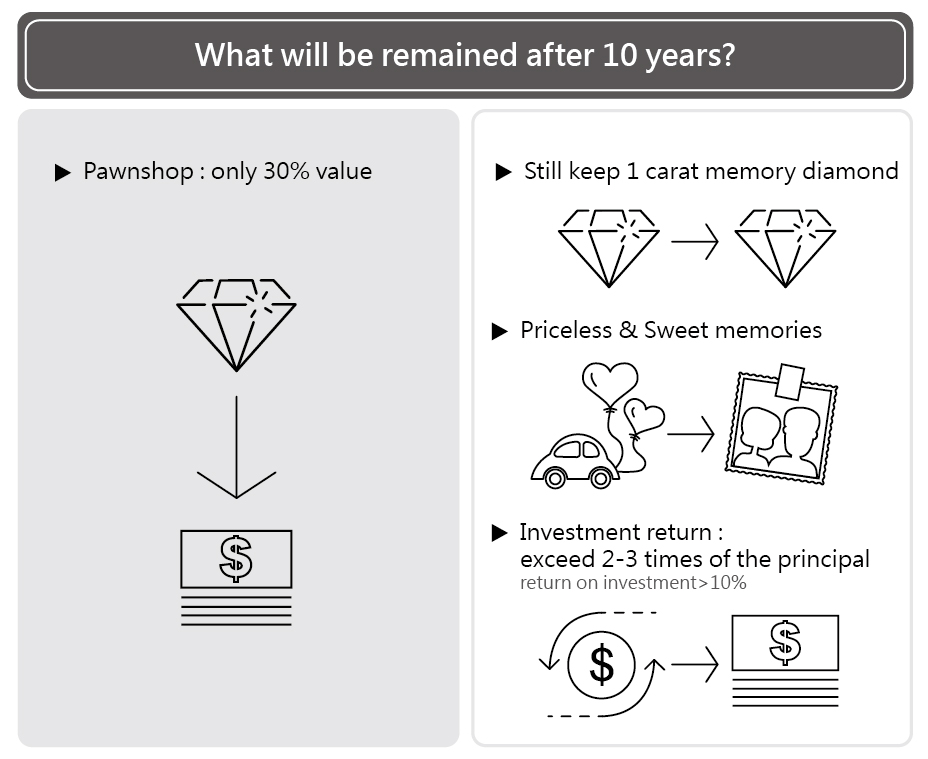Q & A
ABOUT DIAMOND
Diamond also refers to diamond within the field of chemistry and industry. With the main component of carbon, it often contains small amounts of silicon, aluminum, calcium, magnesium, iron, nitrogen or boron. Diamond belongs to the isometric crystal system; each carbon atom develops strong covalent bonding with the other four carbon atoms, and crystals of diamonds are formed by carbon elements in an octahedral form.For its highest hardness (the Friedrich Mohs is up to 10), diamond is the hardest substance in nature, being called the “King of Hardness”.
Pure diamond is transparent and colorless. Small amounts of impurities will color diamond blue (boron) and yellow (nitrogen). Colorless diamonds are rare in nature, most of which are slightly yellow. Diamonds in nature were crystallizedatboth ultra-high temperatures (over 1500 ℃) and ultra-high pressures (above 50,000 atmospheres) in the earth, equivalent to the depth of 150~300 kilometers below the surface.
What about synthetic diamonds? Diamonds are successfully synthesized in the lab in the last century after countless failures for hundreds of years. Currently, there are two synthesis methods for gem diamonds, namely the High-Pressure, High-Temperature (HPHT) and the Chemical Vapor Deposition (CVD).At present, about 90% of industrial diamonds have been replaced by synthetic diamonds (HPHT), and gem synthetic diamonds have also entered the market. In recent years, diamonds can be synthesized under low pressure with the Chemical Vapor Deposition (CVD).The weight of a single diamond claimed to be up to 100 carats is quite competitive. The synthetic diamonds will boom on the market year by year as De Beershas begun to manufacture and sell them in 2018.
1.What is Lab. Grown Diamonds? What is synthetic diamonds? What's the distinction with natural diamonds?
Diamonds are successfully synthesized in the lab in the last century after countless failures for hundreds of years. Currently, there are two synthesis methods for gem diamonds, namely the High-Pressure, High-Temperature (HPHT) and the Chemical Vapor Deposition (CVD).
"Synthetic Diamonds":
They are diamonds grown artificially in a laboratory that simulates the growth of natural diamonds under high temperature and high pressure in the earth's crust.
"Lab. GrownDiamonds":
They are crystallized through artificially syntheticmethod, including the High-Pressure, High-Temperature (HPHT) and the Chemical Vapor Deposition (CVD), being called “Lab. Grown Diamond” in the diamond identification.
Synthetic Diamond vs Natural Diamond:
Not only appearance and composition but also physical and chemical properties of synthetic diamond are as the same as those of natural ones. The difference lies in the way they grow: natural diamonds are mined from the earth but lab. grown diamonds are created in the stimulating growth of natural diamonds in the lab, which can’t be distinguished by eyes or traditional instruments. If without high resolution instruments, synthetic diamond can stand out for more “perfect clarity” and “reasonable price”.
Please refer to the following diamond classification chart:
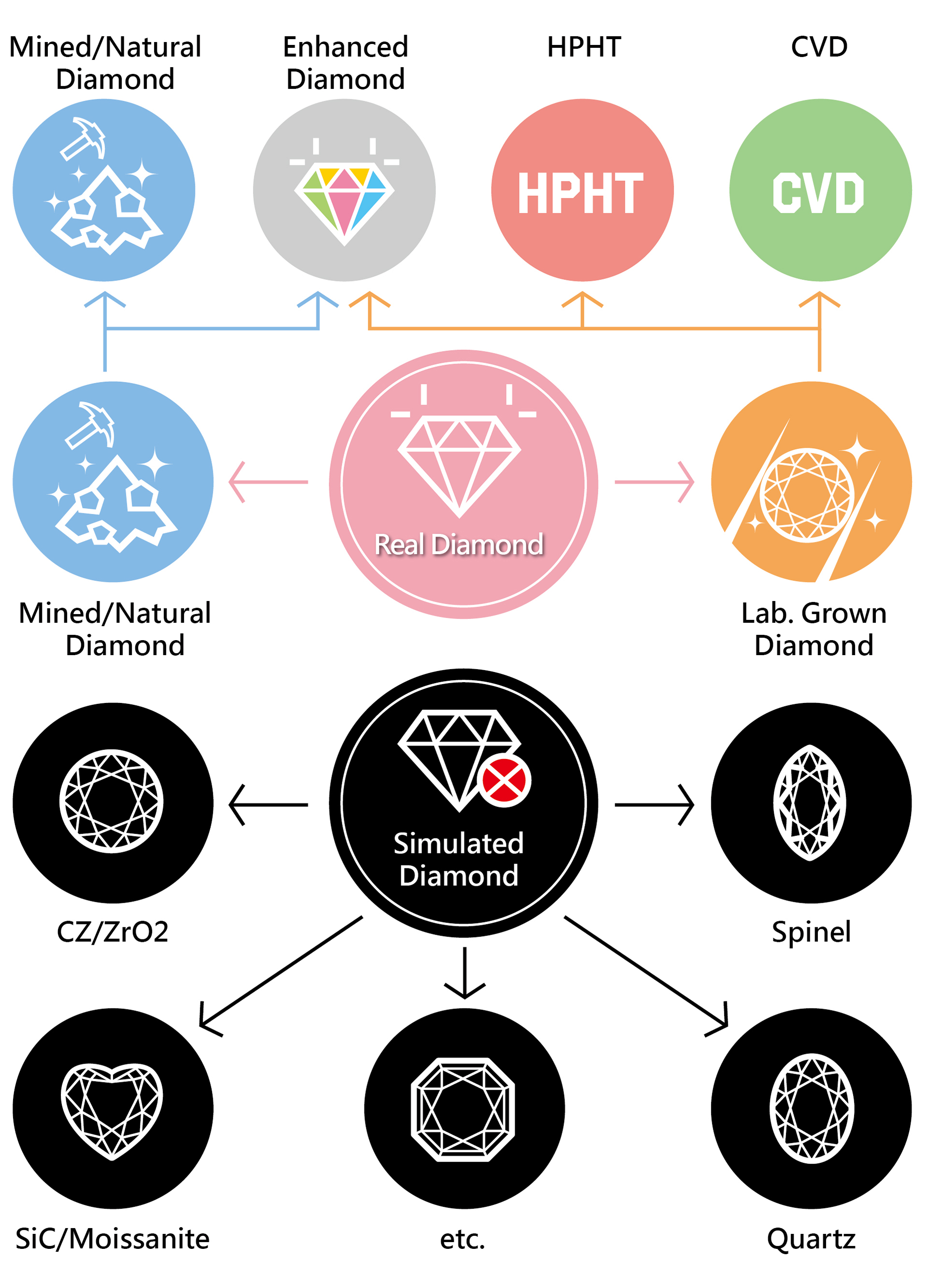
In July 2018, the FTC’s decision resoundingly rejected the arguments of De Beers’ lobbyists,instead choosing to side with science on the definition of a diamond — A crystal of carbon, regardless of subterrestrial or superterrestrial origin.
Here’s the FTC’s new definition: A diamond is a mineral consisting essentially of pure carbon crystallized in the isometric system.
The FTC justified their change as follows:
The final Guides therefore eliminate the word “natural” from the diamond definition. When the Commission first used this definition in 1956, there was only one type of diamond product on the market — natural stones mined from earth. Since then, technological advances have made it possible to create diamonds in a laboratory. These stones have essentially the same optical, physical, and chemical properties as mined diamonds. Thus, they are diamonds.
The distinctions between these lab-created diamonds and mined stones are addressed elsewhere in the Guides. Since it is no longer correct to define diamonds as “natural,” the final Guides do not include “natural” in the diamond definition.
There is no such thing as synthetic gold.
There is no such thing as synthetic platinum.
There is no such thing as synthetic carbon.
There is no such thing as synthetic diamond.
In light of the new guidance from the Federal Trade Commission (FTC), the Diamond Producers Association may consider changing the slogan from "Real diamonds" to "Carbon crystals are diamonds, regardless of origin".
[Conclusion]: Lab-created diamonds have essentially the same optical, physical, and chemical properties as mined diamonds. Thus, they are diamonds.

